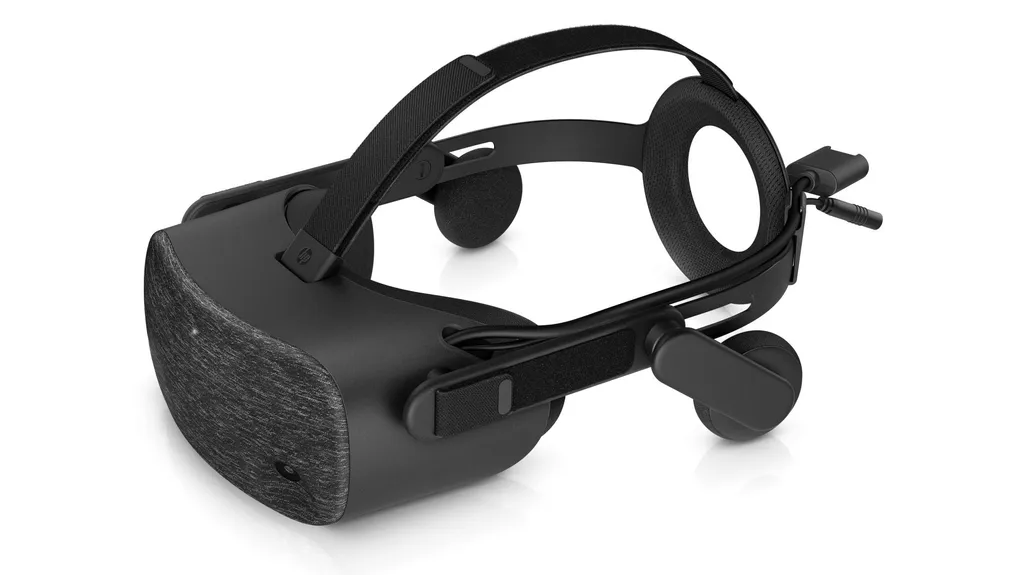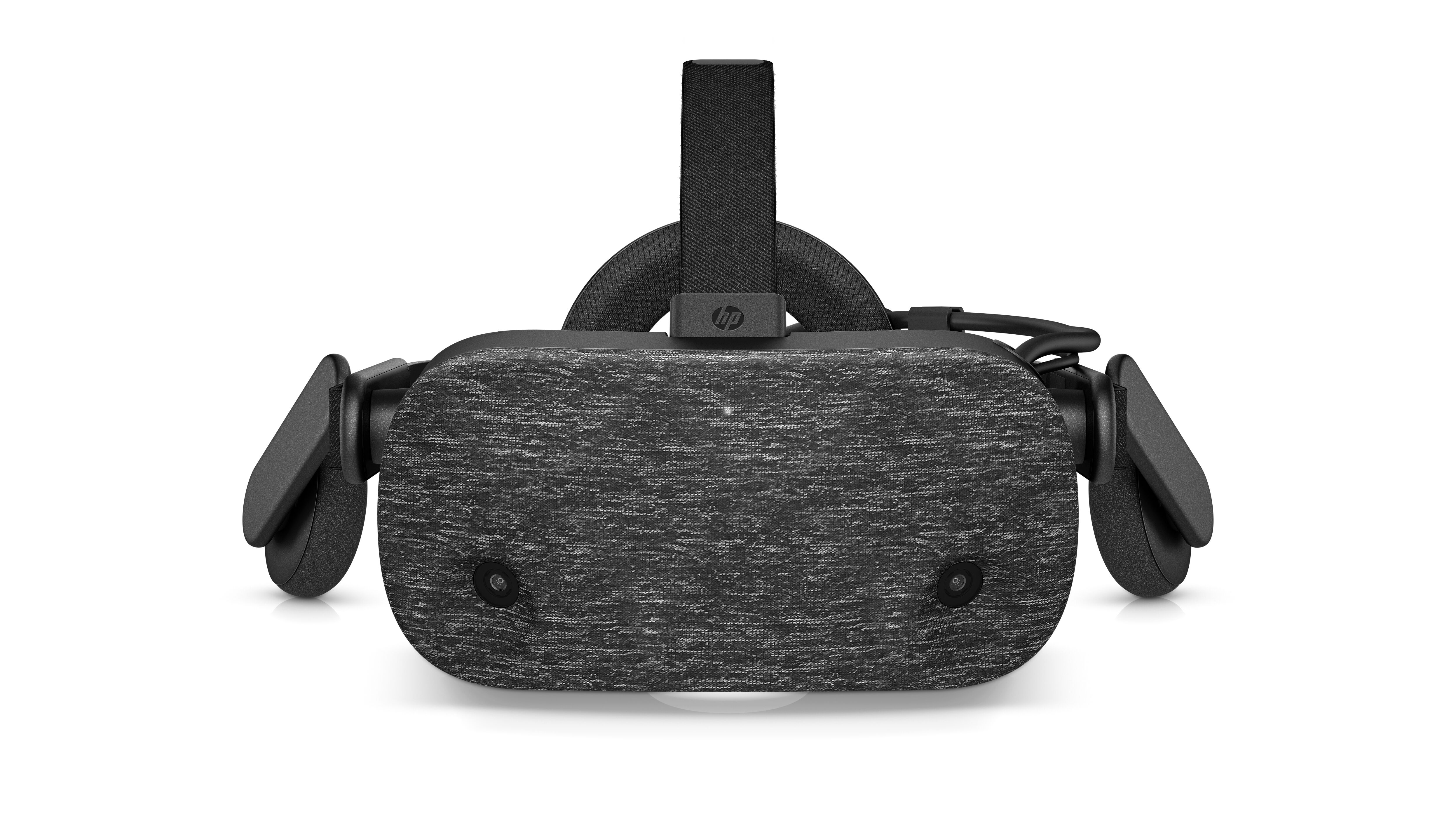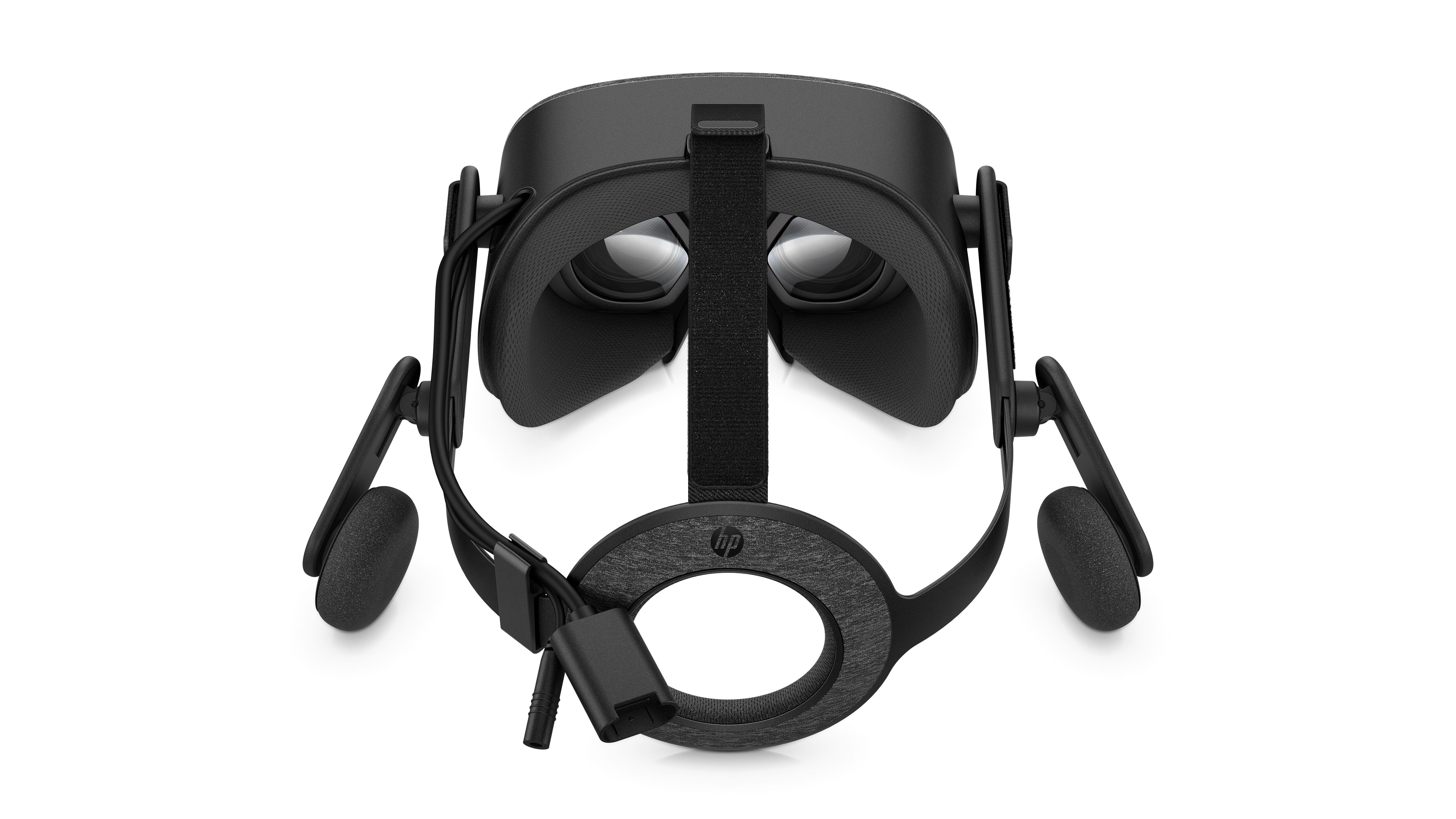HP is officially announcing the next-generation of its Windows VR headset line: the HP Reverb. The HP Reverb releases in April and costs $599 for the consumer edition and comes with two Windows VR controllers. The commercial edition of the headset costs and includes a longer warranty, a leather face cushion for quick wipe downs, and an optional short cable for use with backpack PCs. HP invited me to their Palo Alto, CA office a few weeks ago to try it out.
This PC VR headset has a 2160 x 2160 per eye resolution (making it a 4K headset at 4320 x 2160 combined) with dual 2.89″ LCD panels and Fresnel-Aspherical lenses. It’s got a 114-degree field of view and uses the same two-front-facing-cameras for tracking that you can find in other existing Windows VR devices.
Naturally, I have a lot of VR headsets. Just looking around my desk, nearby shelves, floor, and immediate surrounding area I count ten different VR HMDs across half as many platforms. And as someone that wears glasses all-day every day usually, comfort is a massively important feature. So far the PSVR, Oculus Go, and Oculus Rift have been my favorites from a comfort perspective — until now. I need to spend more time with it still to be sure, but the Reverb might beat them all.
Built For Comfort
As you can see HP must have been very inspired by the Oculus Rift when they designed the Reverb. Other than the soft material on the very front and its two inside-out tracking cameras to distinguish the two devices, they look remarkably similar.
In terms of features, the Reverb consumer edition comes standard with included headphones (but you can remove them if you want) as well as an onboard microphone, comfortable head straps, and a very soft face cushion that can be removed and washed. It’s also got built-in bluetooth so the controllers pair directly to the headset effortlessly rather than having to go through your PC’s bluetooth.
The secret to its comfort seems to come from the light weight (just barely over a pound without the cable) and the tremendous visual clarity. Its design and fit feel like a combination of the best design elements of the Oculus Rift, Oculus Go, and Google Daydream into a single device.
Plus, hitting that 4K total pixel count across both eyes is fantastic and really helps improve the smoothness of every application and game I tried. One of the demos had me walking around the floor of what looked like a shipping warehouse doing safety inspections. I could read labels on canisters, the words on my clipboard, and more due to the high-resolution panels.
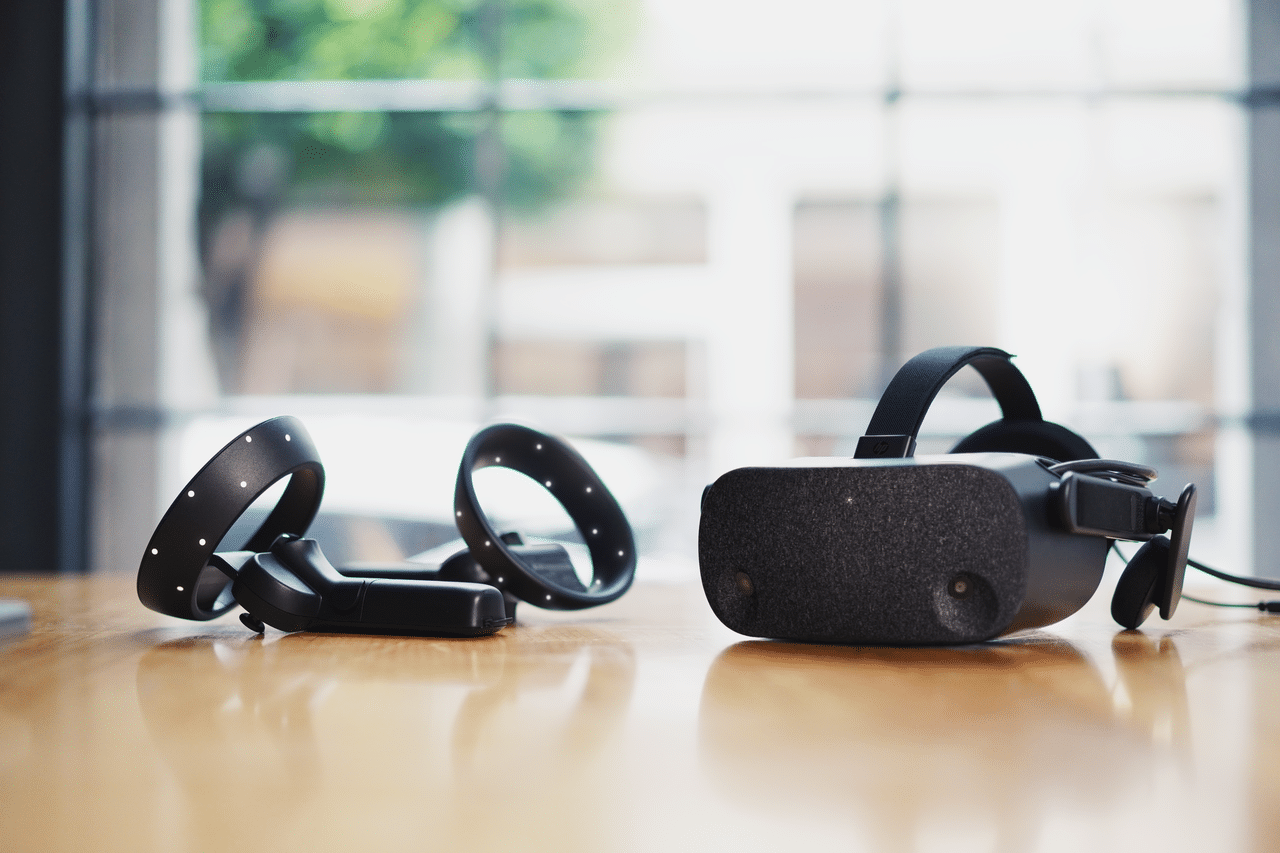
Putting It Through Its Paces
The entire presentation that HP gave me was remarkably bold in tone as they highlighted how it weighed much less than the Vive Pro and features a higher resolution display all at a much lower cost. In fact, they even let me demo the Samsung Odyssey+ which is a very nice Windows VR headset, immediately before trying the Reverb. I can say with confidence the HP Reverb is an overall better experience and as far as I can tell will be the best Windows VR device on the market when it launches.
I wish I had gotten more time with it, but after the inspection app and a couple other brief enterprise-focused demos I hopped into The Lab to stand on the edge of a mountain and look out at the photo-realistic landscape. VR tourism, Google Earth VR, and anything that involves recreations of realistic environments such as real estate is going to benefit greatly from the Reverb.
After that I jumped into Beat Saber for something my eyes were very familiar with as a point of comparison. The sharpness and clarity was immediately noticeable, as well as the lightness of the headset itself. Colors seemed much more vibrant thanks to the LCD’s RGB sub-pixels.
The only real caveat here is that I noticed a tiny bit of outer edge distortion in the lenses, but HP assured me that would be resolved in actual for-sale units. I’ll have to wait and see when our actual official review unit arrives in a few weeks.
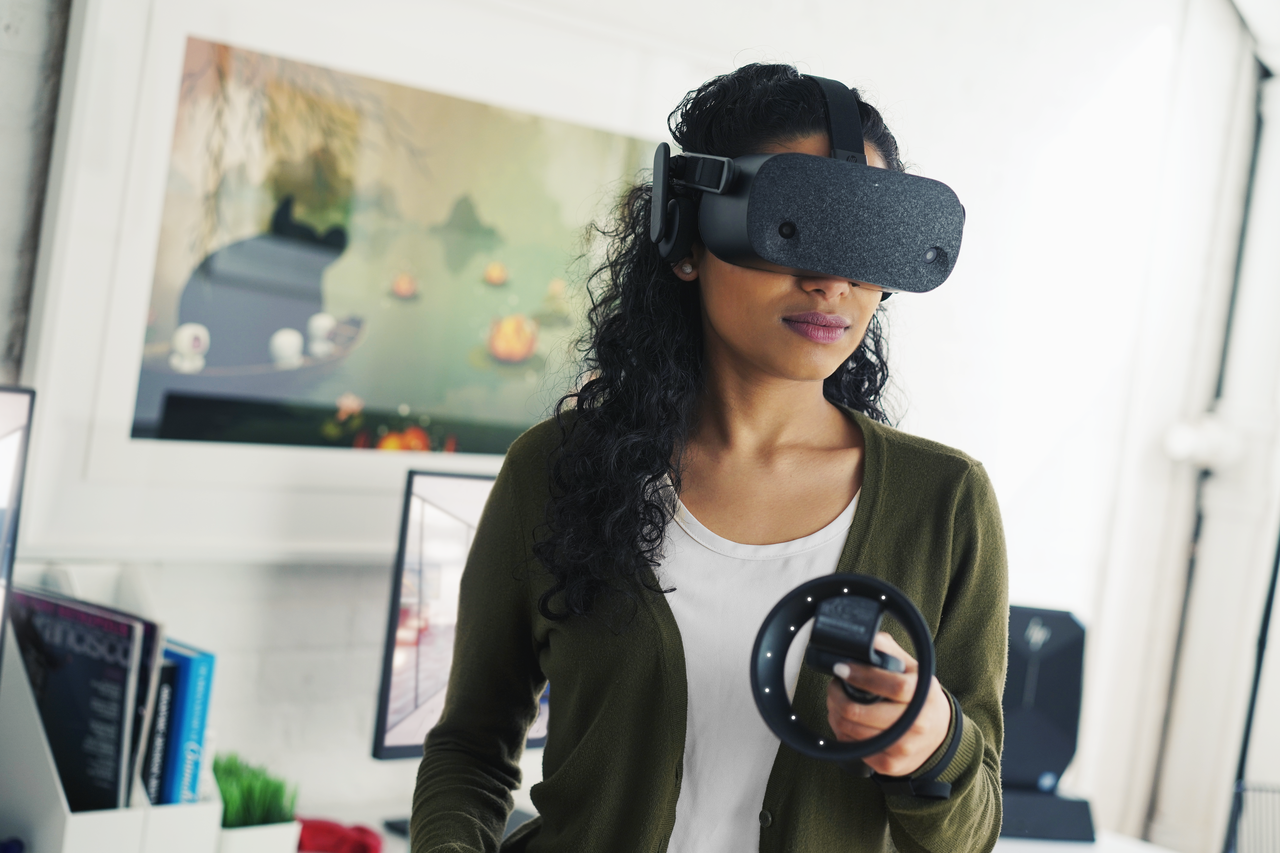
Technically the Pimax 5K+ and 8K both have this headset beat still and those are available, assuming the company’s various different production issues have been ironed out. They seemed optimistic when we spoke with them last at CES in January. Google and LG have a panel in development as well that would blow this headset out of the water.
But when it comes to high-quality, reliable, and polished products visuals don’t get much better than the Reverb as of the time of this writing.
By comparison, the original HP Windows VR headset (read our thoughts here) is looking archaic and it’s only a year and a half old at this point. We liked it at the time, but the binocular-style FOV, cheap build, and Robocop design. You can still buy one though, for $299 as of the time of this writing, which is a pretty good deal.
And to be clear, this headset is 100% compatible with not just the Windows VR store but also Steam VR as well. Most major titles now have Windows VR support officially.
HP is launching two versions of the Reverb VR headset in April. The consumer model is $599 and the enterprise/commercial version is $649. The only difference for the commercial version is an optional short wire for backpacks, leather face cushion that can be wiped and cleaned on the spot, and extended warranty + customer service.
Let us know what you think down in the comments below!

